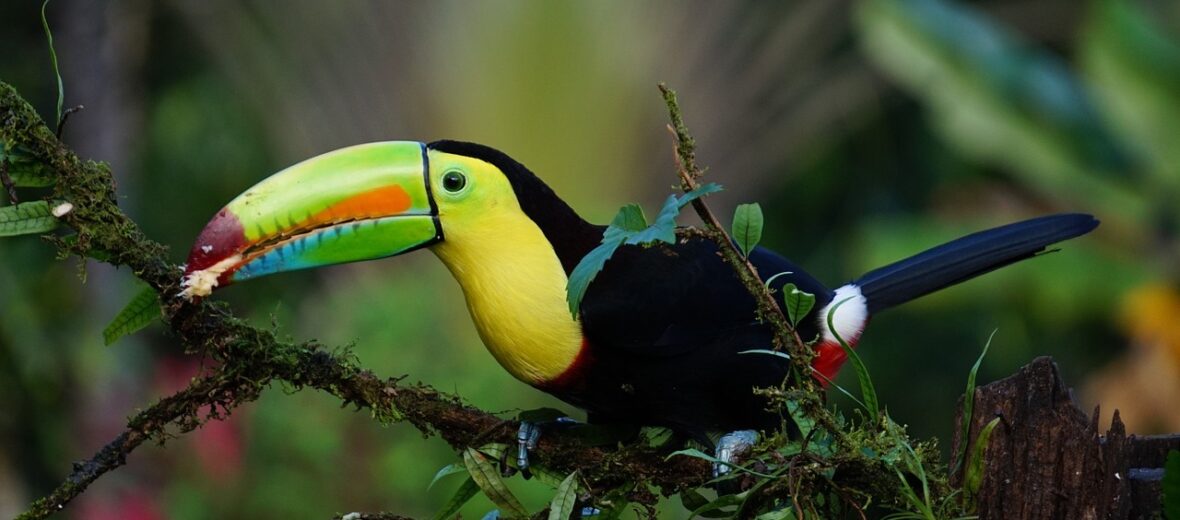
It’s the toucan. Yep, the bird on the cereal box. These beautiful birds are famous for their large colorful beaks, but they’re much more than just a famous beak. They have the longest bill of any bird in the world in relation to their body size. These birds lack the ability to talk, like parrots, but they have amazing personalities and can even be taught tricks like catching small pieces of fruit tossed in the air. Their beaks are large because they act as a thermal radiator. While most toucans are listed as Least Concern by the IUCN, some are in danger and listed as Vulnerable, Near Threatened, and Endangered.
First the Stats…
Scientific name: Ramphastidae
Weight: Up to 1.7 lbs
Length: Up to 20 inches
Wingspan: Up to 25 inches
Lifespan: Up to 20 years
Now on to the Facts!
1.) The Chestnut-Mandibled toucan, like other toucans uses hollowed out trees, made by woodpeckers, as their home.
2.) Toucans manage their body heat by controlling blood flow to their large beak. When they sleep, they even sleep on their beaks to conserve heat.
3.) The toucan’s bright colors actually help it to hide in the brush and trees.
4.) There are over 40 different species of toucan!
5.) Baby toucans will incubate for around 3 weeks. When they are born they don’t have the pronounced beak. This grows as they age.
But wait, there’s more on the toucan!
6.) Due to the small pores, their beak is actually quite light.
7.) Toucans have a 6 inch long tongue!
Did you know…?
The Toco toucan is the largest of all the toucans, measuring 25 inches tall with a bright neon orange beak.
8.) Their beaks have a serrated edge that acts as a sort of knife when handling food.
9.) A toucan’s wings are actually rather small and thus they use them for gliding short distances, preferring to hop from branch to branch; rather than fly.
10.) Jaguars, snakes, and mostly humans are their biggest threat to survival.
Now a Short Toucan Video!
Want to suggest a critter for me to write about? Let me know here.




Leave a Reply